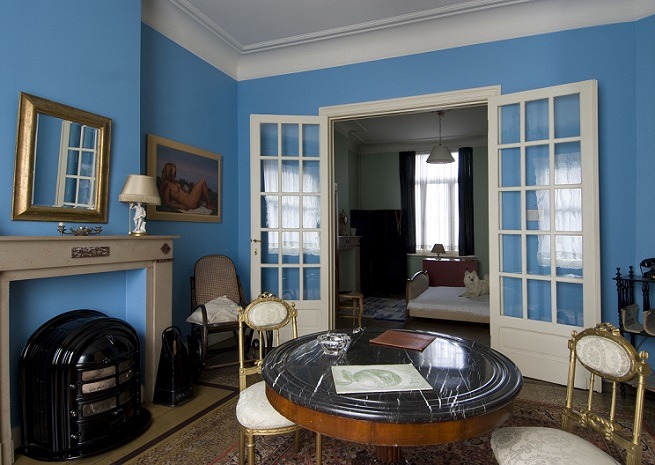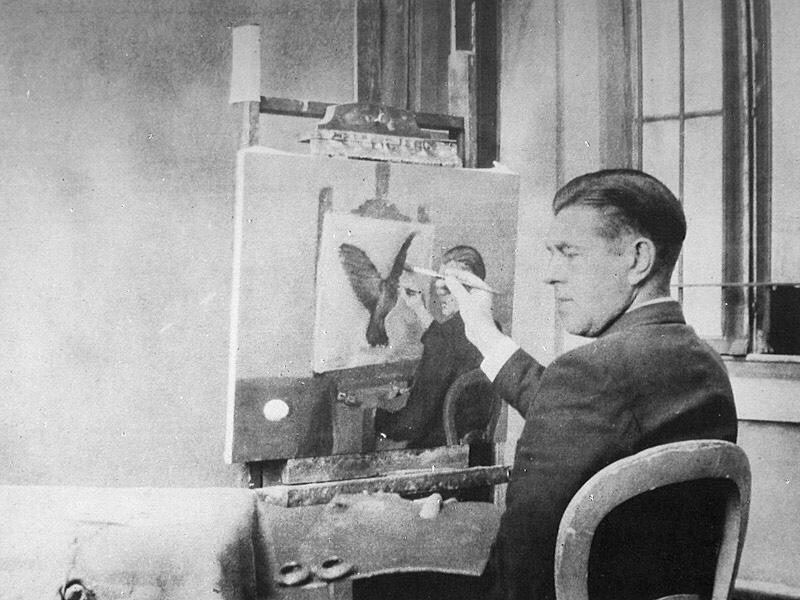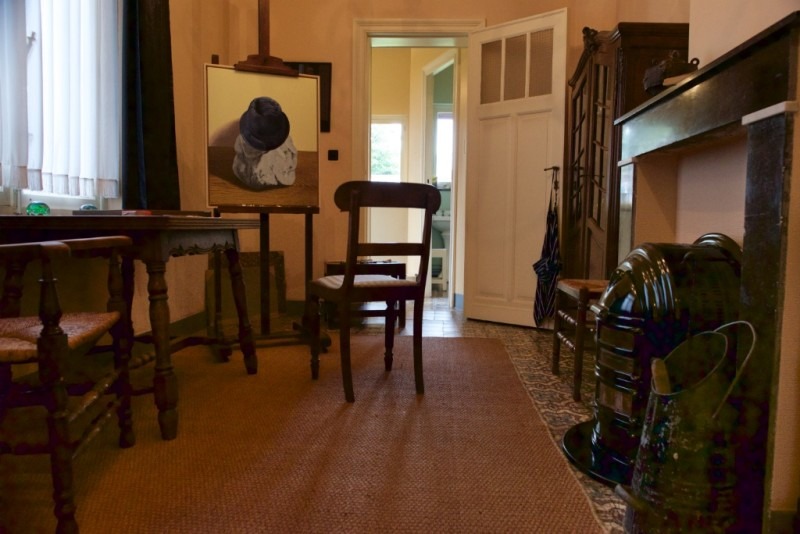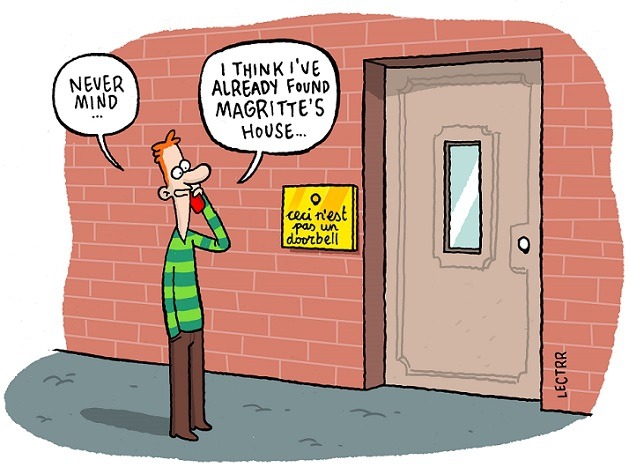One of the most important artists of the 20th century lived for 24 years in a quiet street near the gasworks in Jette.
The Surrealist artist René Magritte – famous for his painting of a pipe titled Ceci n’est pas une pipe (This is not a pipe) – lived in a modest red brick house in Rue Esseghem 135 along with his wife Georgette and a fluffy Pomeranian dog.
The artist’s former home, where he painted more than half his works, is now an extraordinary museum. But be sure you get the right place because there is another Magritte Museum on Place Royale where you can see some 200 paintings by the artist. Maybe it would avoid confusion if the museum in Jette had a sign that said Ceci n’est pas le Musée Magritte.
Some years ago, the apartment was bought by an art critic, André Garitte, with the aim of creating a museum. It was something Georgette Magritte had always dreaded. “I can’t bear the thought of all these people walking over my nice carpets,” she once said.
But her nice carpets were sold a long time ago. The apartment had to be totally refurnished to recreate Georgette’s rather fussy taste and repainted in her favourite pastel colours. It opened in 1998, one hundred years after Magritte’s birth.
The house lies in a quiet Brussels street where you would imagine that nothing ever happens. But then you come to a house with a small black nameplate marked Magritte and a solitary street lamp outside modelled on the one that appears in Magritte’s painting The Empire of Light. You ring the bell and wait.
You half expect the door to be opened by Magritte himself wearing his famous bowler hat. But it is a young woman who lets you inside and asks you to put on plastic shoe covers so you don’t damage the carpets. (Madame Magritte would have approved).
Before you visit the house, you are shown several reproductions of famous Magritte paintings. One painting called The Forbidden Reading includes the very staircase that you see in front of your in the hallway. Another work called Time Transfixed, in which a steam locomotive emerges from a fireplace, clearly includes the fireplace that you can see in the couple’s front room.

The fireplace in Magritte’s front room features one of his famous work “Time Transfixed”, in which a steam locomotive emerges from a fireplace.
These details are thrilling for anyone who loves the strange surreal art of Magritte. They prove that he found much of his inspiration within the walls of his respectable Brussels home. When he painted Attempting the Impossible – in which Magritte paints a naked woman out of thin air – he included the wood panelling in his own front room. “The mouldings on a door seemed to me to be endowed with a mysterious existence,” he wrote in 1940. But not everyone was enchanted by the domestic details. The Surrealist poet and art critic Louis Scutenaire said they were “touching but irrelevant.”
Magritte and Georgette moved to Jette in 1930, soon after they returned from an unsuccessful period in Paris. It seems odd – even surreal, you might say – that Magritte spent 24 years of his life in this neat Brussels apartment, furnished with department store antiques, comfortable sofas and a baby grand piano. It seems so ordinary, so bourgeois.
Magritte didn’t even have a studio. He worked in the tiny kitchen at the back of the house, painting at an easel that had to be moved to one side when Georgette served dinner.

Magritte working in his studio in 1936
On the surface, Magritte lived a quiet Belgian life. He dressed in a suit and bowler hat (even when he was painting), walked his dog around the block every day, and occasionally took the tram into town to play chess at the Greenwich café. He sometimes tried to sell his paintings to the chess players, but they joked that he painted as badly as he played chess.
He may have been mocked by the café regulars, but Magritte was eventually appreciated by dealers and collectors in New York and London. He had an enormous influence on the way we see the world, altering forever the significance of banal objects like pipes, bowler hats and cabbages.
His paintings have been reproduced on hundreds of paperback books, and his enigmatic style has influenced everything from advertising to record sleeves, often in ways that are barely noticed, like Paul Simon’s largely unknown song René and Georgette Magritte with their Dog after the War.

Magritte’s dining room and studio. Many of the features in the house can be found in his paintings.
Magritte died 50 years ago, in 1967, yet his influence is far from over. A fascinating article in Forbes magazine recently revealed the link between a Magritte painting and Apple computers. The painting, which showed a big green Granny Smith apple with the words “Au revoir” written on it, was bought by Paul McCartney in 1966 and led the Beatles to name their record label Apple. Steve Jobs, a big Beatles fan, later borrowed the name when he was setting up his computer company, so Magritte’s apple now glows mysteriously in billions of computers and phones.
The first floor of the museum is filled with documents, photographs and odd mementoes, including the plastic doorbell from the Magritte’s home in Schaerbeek and the artist’s health insurance certificate, which shows that he paid the compulsory assurance gros risques (insurance for major risks) but opted out of the assurance petits risques. Next to the certificate, a small notice points out that Magritte’s health insurance remained valid several weeks after his death, but only for the gros risques, mind you.
To mark the 50th anniversary of Magritte’s death, the commune of Jette recently declared itself “the most Surrealist commune in Belgium”. They plan to organise night walks, unveil a new Magritte mural and brew a beer called Georgette.
But the house in Rue Esseghem is the place to go to enter into the world of Magritte. You might never look at an Apple phone again without thinking of the strange Belgian artist who painted a large green apple floating mysteriously in front of a man in a bowler hat.
René Magritte Museum
Rue Esseghem 135, Jette
+32 (0)2 428 26 26

